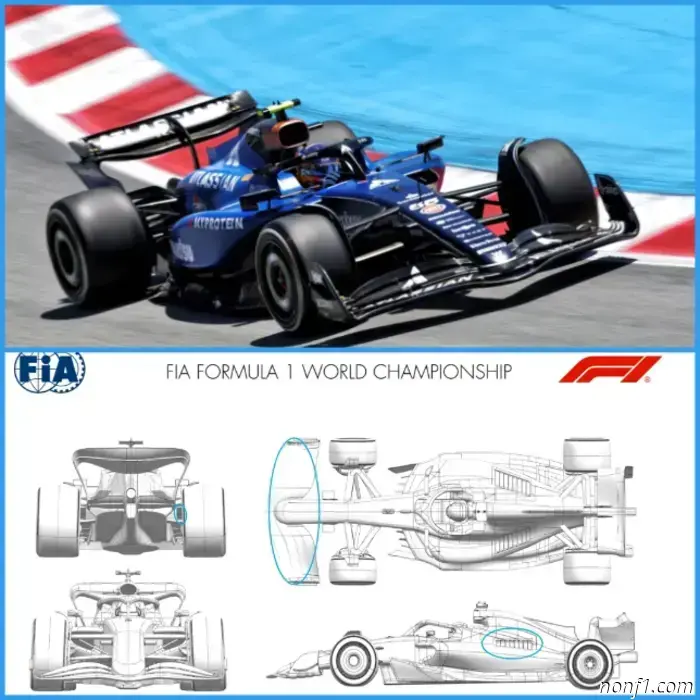
Technical innovations presented by the teams in Spain
Usually, teams are preparing whole sets of chassis upgrades for the Barcelona stage, for several reasons. In particular, because the characteristics of the Catalan ring make it possible to adequately assess the effectiveness of aerodynamics, and it is believed that if the car is capable of good speed on Barcelona-Catalunya, it will cope well with most other tracks.
But in 2025, the situation is not quite the usual one, since it is from this stage that the FIA introduces stricter requirements for the flexibility of the front wings, so first of all it was necessary to solve the problem of adapting this most important element of aerodynamics, and solve all the others along the way. At least, this applied to the top teams, which fully exploited the "gray areas" of the technical regulations.
Interestingly, at the beginning of the Spanish race weekend, nine out of ten teams reported on various technical updates: only McLaren did not report any changes, although it was believed that the flexible front fenders of the MCL39 cars had almost the most questions.
Ferrari
On the SF-25, the changes affected both wings: the Italian team explains that on the upgraded front wing, the load is distributed differently between its elements, and the geometry of the end plates has also been slightly revised.
The Scuderia emphasizes that this has nothing to do with the specifics of the Barcelona circuit, and all changes are dictated solely by the FIA directive.
But the modification of the rear wing is precisely related to the characteristics of the Catalan ring, which requires a high level of downforce. Moreover, this is almost the same wing that was used in 2024 and has already been used this season at the Imola stage, but its outer edges have been slightly upgraded.
Red Bull Racing
On the RB21, the first two elements of the front wing have been revised, and the geometry of its adjustable element has been adjusted in accordance with these changes, primarily aimed at increasing the rigidity of the entire structure so that it meets the new requirements of the technical regulations that came into force with the Spanish Grand Prix.
Mercedes
On the cars of George Russell and Kimi Antonelli, the changes did not affect the front fenders, but the rear ones, as well as the bottom of the W16.
Its edges have become somewhat different, new additional elements have appeared on them, which increases the energy of the vortices generated in the front part of the bottom by the Venturi tunnel partition system – accordingly, this gives an increase in downforce. The profiles of the partitions themselves in the front of the bottom have also been revised.
Both the main plane and the adjustable element have been changed on the rear wing, which is due to the special features of the track, which requires high downforce.
Aston Martin F1
The Silverstone team reported on the changes made to the design of the front wing, while emphasizing that only its "main section has been revised to comply with Technical Directive TD018H."
And the geometry of the end plates and the additional elements mounted on them has been adjusted in order to improve the efficiency of this area of the wing.
Alpine F1
The Renault factory team does not mention the front wing at all, but informs about the revision of the profile of the Venturi tunnel partitions on the bottom of the A525. This is done to "improve the quality of the bottom structure," which allows for improved airflow under it and an increase in downforce.
It is also reported about "local changes in the shape of the bottom" so that the effect of upgrading its partitions is maximized.
Haas F1
The front fenders of the updated design are installed on the cars of Esteban Ocon and Oliver Berman, which is done to comply with the new requirements of the Technical Regulations.
Racing Bulls
The main elements of the front wing of the VCARB 02 have been updated, its central section is now located slightly lower. Therefore, it is loaded more strongly compared to the edges of the wing, and this allows not only to make the entire structure more rigid, but also to optimize the characteristics of the airflow.
The changes that affected the additional elements that are mounted on the end plates of the wing are also aimed at this.
The team also reports that the design of the nose cone has been changed as a whole: "the lower surface of the nose was raised, while its tip was lowered." This is done to match its design to the changes discussed above.
Williams
Williams seems to have completed the modernization program for this year's car, but they have perhaps the most extensive list of changes presented at the Spanish stage of the season.
It's clear that this is partly due to the new FIA technical directive, but it's not just about that. According to the team, on the one hand, the FW47's front wing was changed for this reason, but Grove "used this opportunity to further refine the geometry of the adjustable wing element" and the end plates.
In accordance with the features of the route, the geometry of the rear brake ducts has been revised, which increases the flow of air passing through them.
Additional blinds have also been added to the engine casing of the car to increase cooling efficiency – now their number has reached a maximum. This increases the volume of air passing through the radiators, although it leads to a slight increase in drag. This configuration is likely to be used not only in Barcelona, but also in the later stages of the season.
Sauber
The Swiss team reported that the improvements affected three areas. Firstly, the geometry of its edges, the partitions of the Venturi tunnels and the diffuser have been changed on the bottom. All this is aimed at "improving the flow characteristics under the bottom of the machine from its front to the rear, which allows efficient generation of balanced downforce."
Secondly, the design of the engine casing was revised, since it was necessary that the geometry of the surfaces of the side pontoons correspond to the changes that the bottom of the car has undergone.
Thirdly, small changes have also occurred with the front wing. The geometry of its end plates has been adjusted, which is done to increase the efficiency of this area as a whole, as well as to improve the quality of the flow that is directed to the bottom of the machine.
Other articles
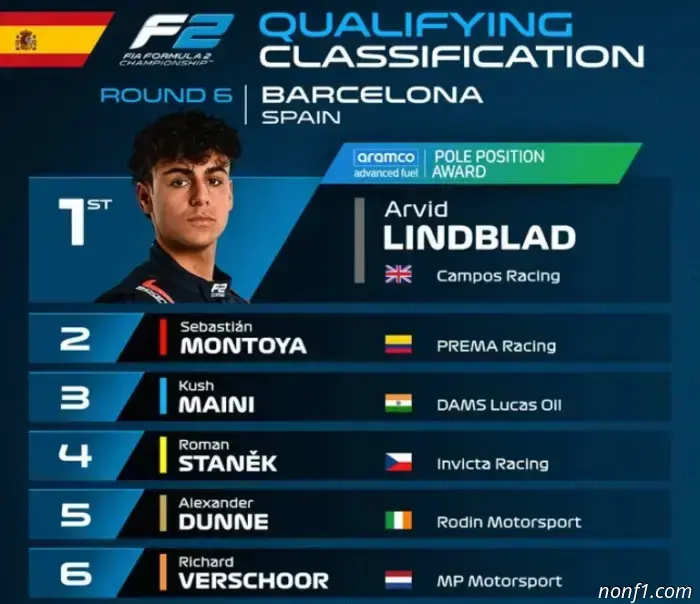 F2: Arvid Lindblad became the youngest pole holder
Arvid Lindblad, 17, a Red Bull youth program driver, won qualifying in Barcelona, becoming the youngest pole holder in Formula 2 history...
F2: Arvid Lindblad became the youngest pole holder
Arvid Lindblad, 17, a Red Bull youth program driver, won qualifying in Barcelona, becoming the youngest pole holder in Formula 2 history...
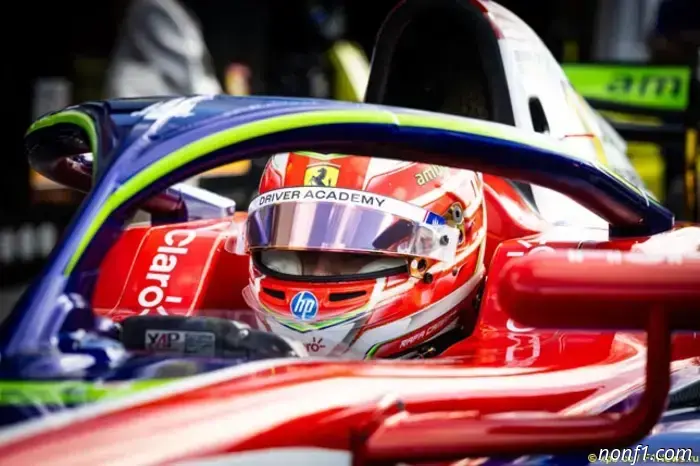 F3: Rafael Camara starts from pole position in Barcelona
Rafael Camara, a member of the Ferrari Racing Academy, showed the best time in qualifying for the fifth stage of the Formula 3 season in Barcelona.
F3: Rafael Camara starts from pole position in Barcelona
Rafael Camara, a member of the Ferrari Racing Academy, showed the best time in qualifying for the fifth stage of the Formula 3 season in Barcelona.
 Sebastian Montoya's career will be handled by Alonso's company
Sebastian Montoya, the 20-year-old son of Juan Pablo Montoya, a former Formula 1 racing driver, has become the 13th client of Fernando Alonso's A14 Management company...
Sebastian Montoya's career will be handled by Alonso's company
Sebastian Montoya, the 20-year-old son of Juan Pablo Montoya, a former Formula 1 racing driver, has become the 13th client of Fernando Alonso's A14 Management company...
 Pirelli named the trains for the stages from Spielberg to Spa
Pirelli has decided on the composition of the slicks that the teams will receive at the summer stages in Austria, Great Britain, Belgium and Hungary...
Pirelli named the trains for the stages from Spielberg to Spa
Pirelli has decided on the composition of the slicks that the teams will receive at the summer stages in Austria, Great Britain, Belgium and Hungary...
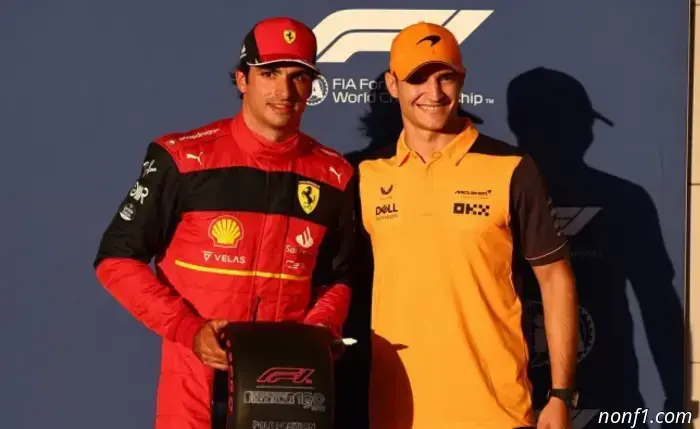 Sainz: Alex Palou's achievements are admirable
At one time, when Carlos Sainz was still involved in karting, he had a chance to compete with Alex Palou, and today the Williams driver was asked if the three-time IndyCar champion could compete in Formula 1...
Sainz: Alex Palou's achievements are admirable
At one time, when Carlos Sainz was still involved in karting, he had a chance to compete with Alex Palou, and today the Williams driver was asked if the three-time IndyCar champion could compete in Formula 1...
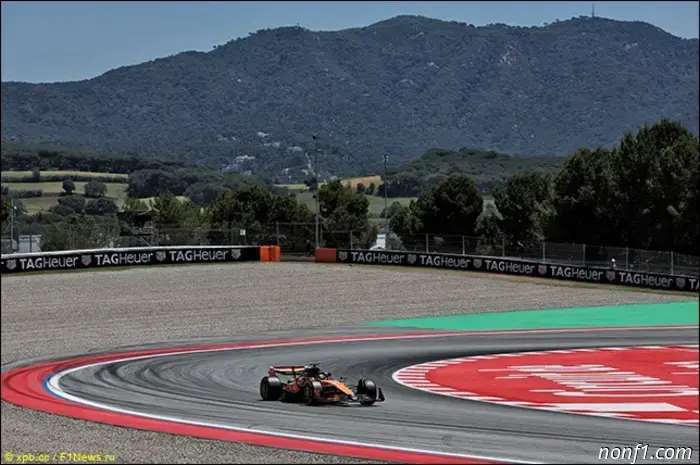 Oscar Piastri leads in the second practice session
Oscar Piastri was the fastest on Friday...
Oscar Piastri leads in the second practice session
Oscar Piastri was the fastest on Friday...
Technical innovations presented by the teams in Spain
Nine teams, with the exception of McLaren– reported on various new products that they had prepared for the Barcelona stage...
